In today’s world, practical and eco-friendly transportation options have become more important than ever. One such option that has gained popularity in recent years is the lightweight electric scooter. These scooters are designed to provide a convenient and efficient way to travel short to medium distances in urban areas.
A lightweight electric scooter is a type of scooter that is powered by an electric motor and typically weighs less than 50 pounds. They are designed to be easy to use and maneuver, making them a popular choice for commuters and city dwellers.
There are several advantages to using a lightweight electric scooter over other modes of transportation, such as cars or public transport. These advantages include their portability, low cost, and environmentally-friendly nature. In this article, we will explore the benefits of using a lightweight electric scooter, key features to consider when choosing one, and answer some frequently asked questions about these scooters.
Benefits of Lightweight Electric Scooters
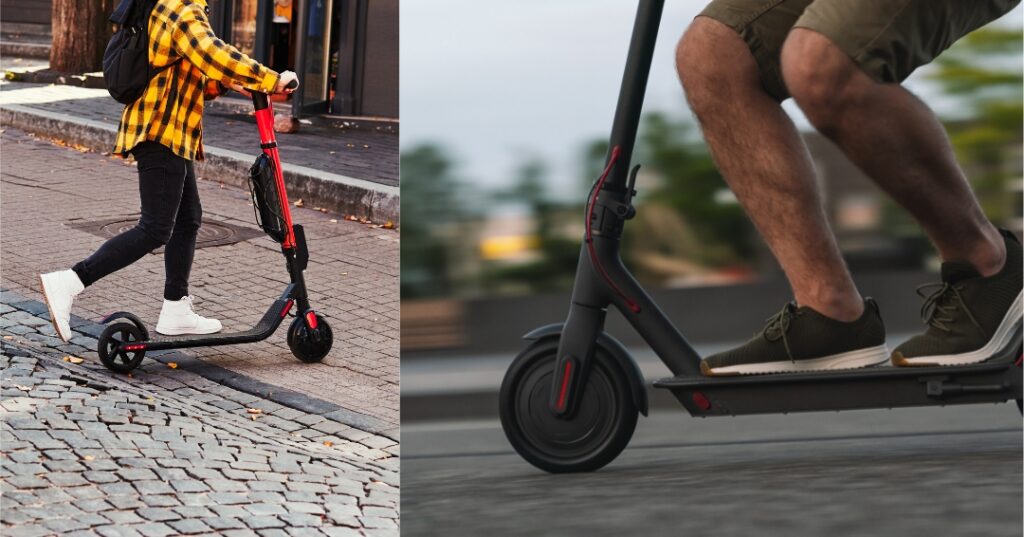
Convenience and Portability
If you live in an urban environment where space is limited, you’ll appreciate the convenience and portability of a lightweight electric scooter. Here are a few reasons why:
Easy to carry: Lightweight electric scooters are designed to be easy to carry around. Most models weigh between 20 and 30 pounds, so you can easily pick them up and carry them upstairs or onto public transportation.
Convenient storage: Because they’re so compact, electric scooters are easy to store. You can keep them in a closet, under your desk at work, or even in the trunk of your car.
Maneuverability: In crowded cities, maneuverability is key. Electric scooters are small and agile, allowing you to navigate through traffic and crowded streets with ease.
No need for parking: Finding parking in a city can be a hassle, but with an electric scooter, you don’t have to worry about it. You can ride your scooter right up to your destination and park it on the sidewalk.
Overall, the convenience and portability of a lightweight electric scooter make it a great choice for anyone who lives in an urban environment.
Cost-Effective Transportation
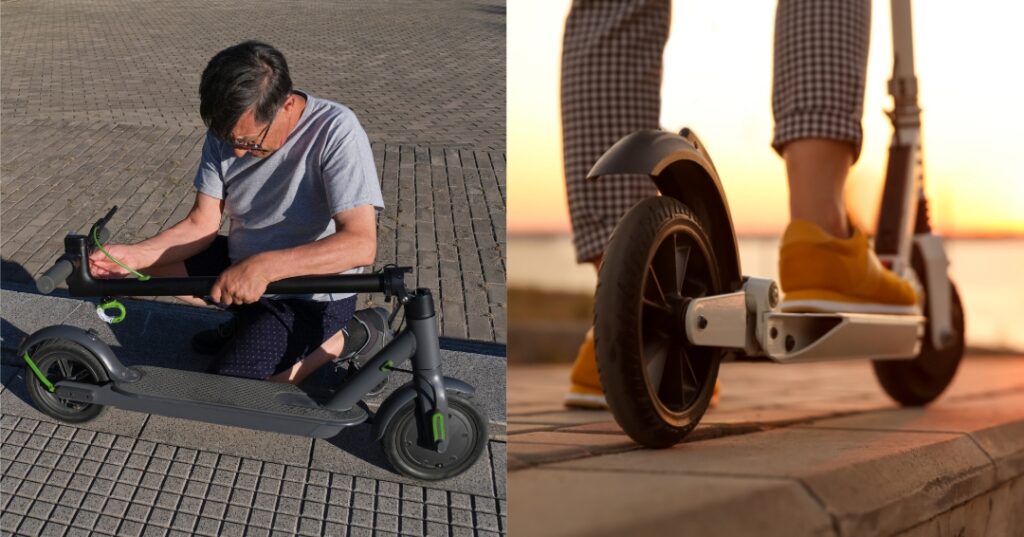
One of the biggest benefits of owning a lightweight electric scooter is that it’s a cost-effective mode of transportation. Here’s why:
Affordable: Compared to cars, motorcycles, and even bicycles, electric scooters are relatively affordable. You can buy a high-quality electric scooter for a fraction of the cost of a car or motorcycle.
Low maintenance: Electric scooters have fewer moving parts than gas-powered vehicles, which means they require less maintenance. You don’t have to worry about oil changes, tune-ups, or other expensive repairs.
No gas required: Because electric scooters run on electricity, you don’t have to spend money on gas. Charging your electric scooter costs just a few cents per mile, compared to the much higher cost of gasoline.
Reduced insurance costs: Insurance for electric scooters is usually much cheaper than insurance for cars or motorcycles. This is because electric scooters are less expensive and less dangerous than larger vehicles.
Overall, owning a lightweight electric scooter can be a smart financial decision. You’ll save money on gas, maintenance, and insurance, and you’ll enjoy a low-cost, eco-friendly mode of transportation.
Eco-Friendly
Electric scooters are a much more eco-friendly mode of transportation than gas-powered vehicles. Here’s why:
Less pollution: Gas-powered vehicles emit harmful pollutants into the air, contributing to poor air quality and negative health effects. Electric scooters, on the other hand, emit no harmful pollutants and are much better for the environment.
Reduced carbon emissions: Electric scooters are powered by electricity, which means they produce zero carbon emissions. This is important because carbon emissions are a major contributor to climate change.
Renewable energy sources: Charging your electric scooter with renewable energy sources, such as solar or wind power, can make your scooter even more eco-friendly.
Sustainable manufacturing: Many electric scooter companies are committed to sustainable manufacturing practices, using materials that are eco-friendly and reducing waste in their production processes.
By choosing a lightweight electric scooter over a gas-powered vehicle, you’re helping to reduce pollution, carbon emissions, and the negative impact of transportation on the environment. It’s a small but important step toward a more sustainable future.
Features to Consider When Choosing a Lightweight Electric Scooter
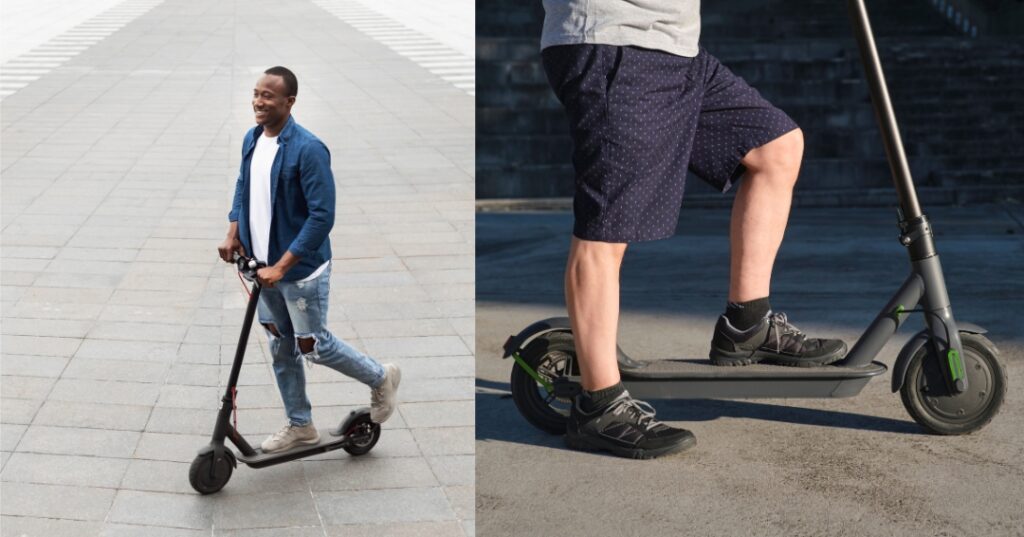
Battery Life and Charging Time
When choosing a lightweight electric scooter, one of the most important features to consider is battery life and charging time. Here are some things to keep in mind:
Calculate the range: The range of an electric scooter is the distance it can travel on a single charge. To calculate the range, you need to know the battery capacity (measured in watt-hours) and the energy consumption of the scooter (measured in watt-hours per mile). Simply divide the battery capacity by the energy consumption to get the range.
Types of batteries: There are several types of batteries used in electric scooters, including lead-acid, nickel-metal hydride, and lithium-ion. Lithium-ion batteries are the most popular because they’re lightweight, have a long lifespan, and can be charged quickly.
Charging times: The charging time for an electric scooter depends on the battery capacity and the charger used. A standard charger can take anywhere from 4 to 8 hours to fully charge a battery, while a fast charger can charge a battery in as little as 2 hours. Some electric scooters also have removable batteries that can be charged separately, which can be more convenient if you don’t have access to an outlet near your scooter.
When choosing an electric scooter, consider your daily commute and how far you need to travel. If you have a longer commute, you may want to choose a scooter with a longer range and a faster charging time. And if you plan to use your scooter frequently, you may want to choose a model with a removable battery so you can always have a fully charged battery on hand.
Speed and Power
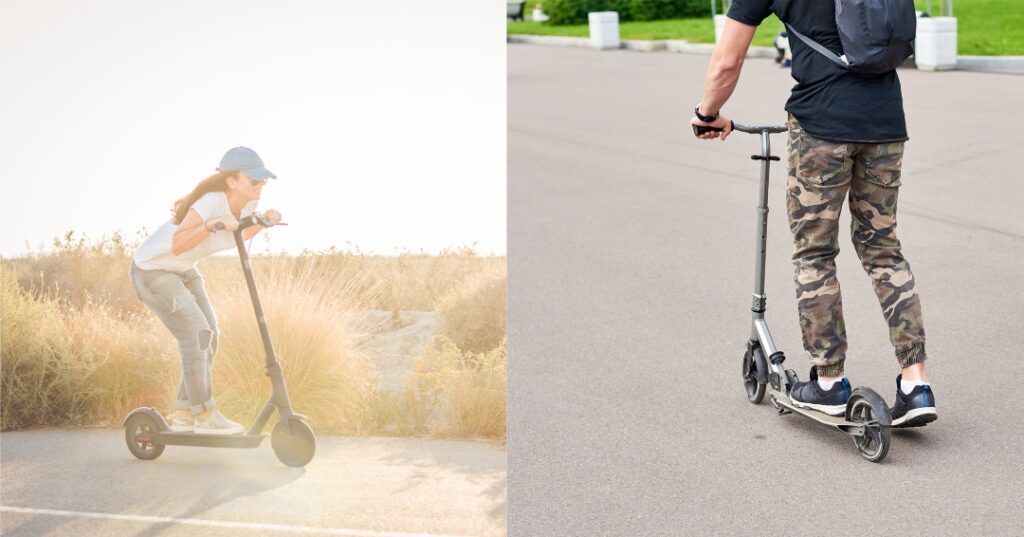
Another important feature to consider when choosing a lightweight electric scooter is speed and power. Here are some things to keep in mind:
Speed options: Electric scooters can have different speed options depending on the model. Some models have a maximum speed of 15 miles per hour, while others can go up to 30 miles per hour or more. It’s important to choose a speed that’s comfortable for you and legal in your area.
Power options: Electric scooters can have different levels of power depending on the wattage and motor type. Higher wattage generally means more power and faster acceleration, but it can also mean a shorter battery life. The motor type can also affect the power and efficiency of the scooter. Hub motors are popular for their low maintenance and quiet operation, while belt-driven motors are known for their high torque and smooth acceleration.
Wattage: Wattage is a measure of the power output of the electric motor. Higher wattage generally means more power and faster acceleration, but it can also mean a shorter battery life. Most electric scooters have a wattage between 250 and 500 watts, but some high-end models can have wattages of 1000 watts or more.
When choosing an electric scooter, consider your needs for speed and power. If you’ll be using the scooter for commuting or running errands, you may not need a high maximum speed or wattage. But if you plan to use the scooter for recreational purposes, you may want a model with more power and speed.
Design and Comfort
The design and comfort of an electric scooter can greatly impact your overall riding experience. Here are some design options and features to consider:
Handlebar height: The handlebar height can impact your comfort and control while riding. Make sure to choose a scooter with a handlebar height that suits your height and riding posture.
Weight capacity: The weight capacity of the scooter is important if you plan to carry items or if you are a heavier rider. Make sure to choose a scooter with a weight capacity that meets your needs.
Suspension system: A suspension system can help absorb shock and provide a smoother ride, especially on bumpy or uneven terrain. Some electric scooters have a front suspension system, while others have a rear suspension system or both. Consider your riding conditions when choosing a suspension system.
Other design options and features that can impact your comfort include:
Wheel size: Larger wheels can provide a smoother ride and better traction, especially on rough terrain.
Deck size and shape: The deck is where you stand on the scooter. Make sure the deck is spacious and comfortable for your feet. Some scooters have wider or longer decks for added stability.
Folding mechanism: The folding mechanism can impact how easy it is to store and transport the scooter. Look for a scooter with a convenient and sturdy folding mechanism.
When choosing an electric scooter, consider your comfort needs and riding conditions. Look for a scooter with a handlebar height, weight capacity, and suspension system that suits your needs. Also, consider other design options and features that can enhance your riding experience.
How to Use a Lightweight Electric Scooter
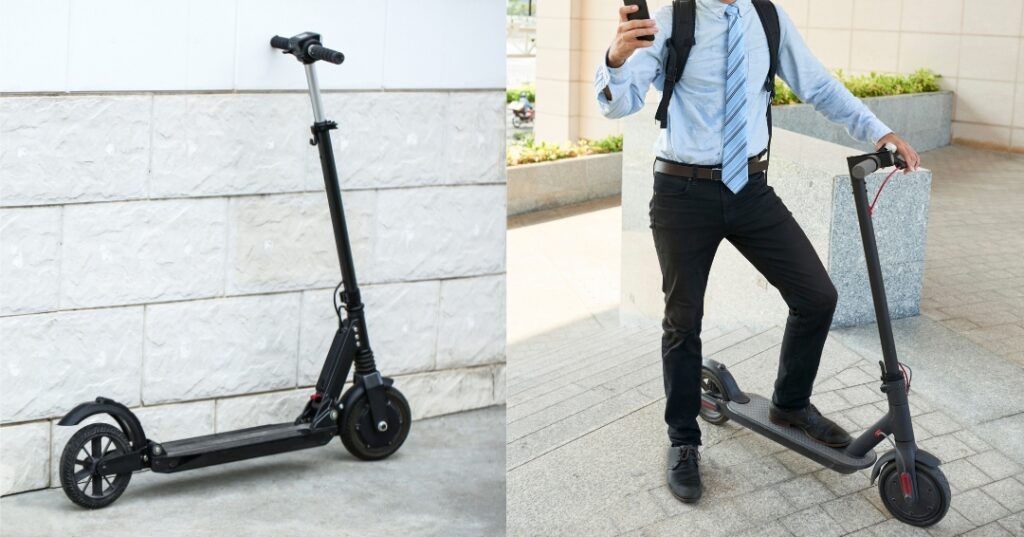
Safety Tips and Regulations
Using a lightweight electric scooter can be a fun and convenient way to get around, but it’s important to prioritize safety. Here are some tips to keep in mind:
Wear a helmet: Wearing a helmet can greatly reduce the risk of head injuries in case of an accident. Make sure to choose a helmet that fits properly and meets safety standards.
Follow local regulations: Laws and regulations regarding electric scooters can vary by location. Make sure to research and follow local rules, such as speed limits, where electric scooters are allowed, and whether or not helmets are required.
Use hand signals: Hand signals can help communicate your movements and intentions to other riders and drivers. Make sure to use hand signals when turning or changing lanes.
Avoid distractions: Avoid using your phone or other devices while riding. Stay alert and aware of your surroundings at all times.
Maintain your scooter: Regular maintenance can help ensure the safety and longevity of your electric scooter. Make sure to check the brakes, tires, and other components regularly and have any issues repaired by a professional.
By following these safety tips and regulations, you can enjoy a safer and more enjoyable ride on your lightweight electric scooter. Remember to prioritize safety and take steps to maintain your scooter for optimal performance.
Riding Techniques and Etiquette
When riding a lightweight electric scooter, it’s important to be mindful of other riders, pedestrians, and vehicles. Here are some best practices to keep in mind:
Be aware of your surroundings: Pay attention to your surroundings and be aware of potential hazards, such as potholes or uneven surfaces.
Ride defensively: Always assume that other riders and drivers may not see you or may not follow traffic rules. Ride defensively and be prepared to take evasive action if necessary.
Respect pedestrians: Pedestrians have the right of way on sidewalks and crosswalks. Slow down and give pedestrians plenty of space when riding near them.
Follow traffic rules: Electric scooters are considered vehicles in most jurisdictions and are subject to the same traffic rules as other vehicles. Obey traffic signals, stop signs, and other rules of the road.
Use hand signals: Hand signals can help communicate your movements and intentions to other riders and drivers. Make sure to use hand signals when turning or changing lanes.
By following these riding techniques and etiquette tips, you can help ensure a safe and respectful ride for everyone on the road. Remember to always be mindful of your surroundings and follow local regulations and traffic rules.
Conclusion
In conclusion, lightweight electric scooters offer a practical and eco-friendly transportation option that is becoming increasingly popular in urban areas. By choosing a lightweight electric scooter, you can enjoy several advantages such as portability, low cost, and environmentally friendly transportation.
It’s important to consider key features such as design and build quality, battery and motor performance, and price and affordability when choosing a lightweight electric scooter. By doing so, you can find a scooter that is safe, efficient and fits your budget.
Making eco-friendly transportation choices is crucial for reducing carbon emissions and protecting our planet. By choosing a lightweight electric scooter, you are taking a step in the right direction toward sustainable transportation.
If you’re considering purchasing a lightweight electric scooter, we recommend doing thorough research on the various brands and models available to find one that meets your needs. With the right scooter, you can enjoy a convenient, efficient, and eco-friendly mode of transportation.
FAQs
Here are some answers to the frequently asked questions about lightweight electric scooters:
What is the weight limit for a lightweight electric scooter?
Most lightweight electric scooters have weight limits ranging from 200 to 300 pounds. It’s important to check the weight capacity of the specific model you are interested in to ensure safe operation.
How long does it take to charge an electric scooter?
The charging time of an electric scooter varies depending on the model and battery size. On average, it takes between 3 to 8 hours to fully charge an electric scooter.
How far can an electric scooter go on a single charge?
The range of an electric scooter depends on several factors such as battery size, terrain, and rider weight. Most lightweight electric scooters have a range of around 15 to 20 miles on a single charge.
What are the legal requirements for riding an electric scooter?
The legal requirements for riding an electric scooter vary by location. In some areas, electric scooters are considered motorized vehicles and are subject to the same rules and regulations as motorcycles or cars. In other areas, electric scooters are considered bicycles and are subject to the same rules and regulations as bicycles. It’s important to check the local laws and regulations before riding an electric scooter.
How much does a lightweight electric scooter cost?
The cost of a lightweight electric scooter varies depending on the model, features, and brand. On average, a good quality lightweight electric scooter can cost anywhere from $200 to $800.

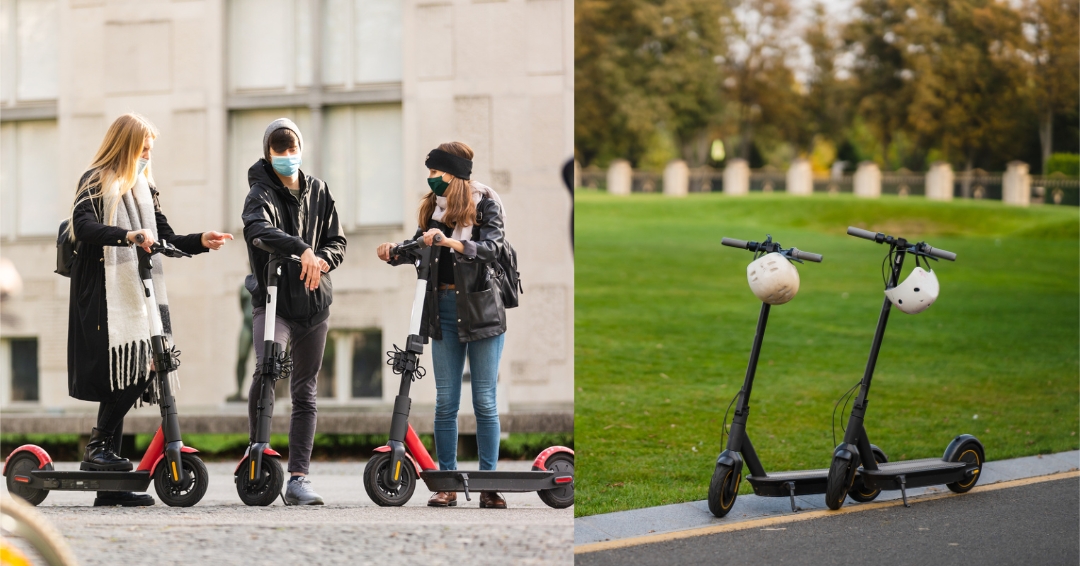



Leave a Reply